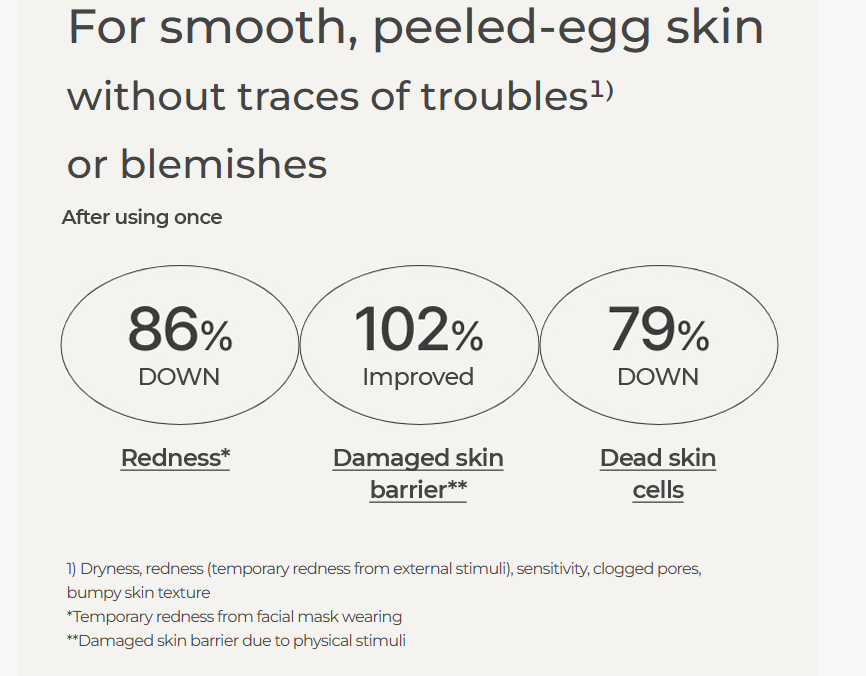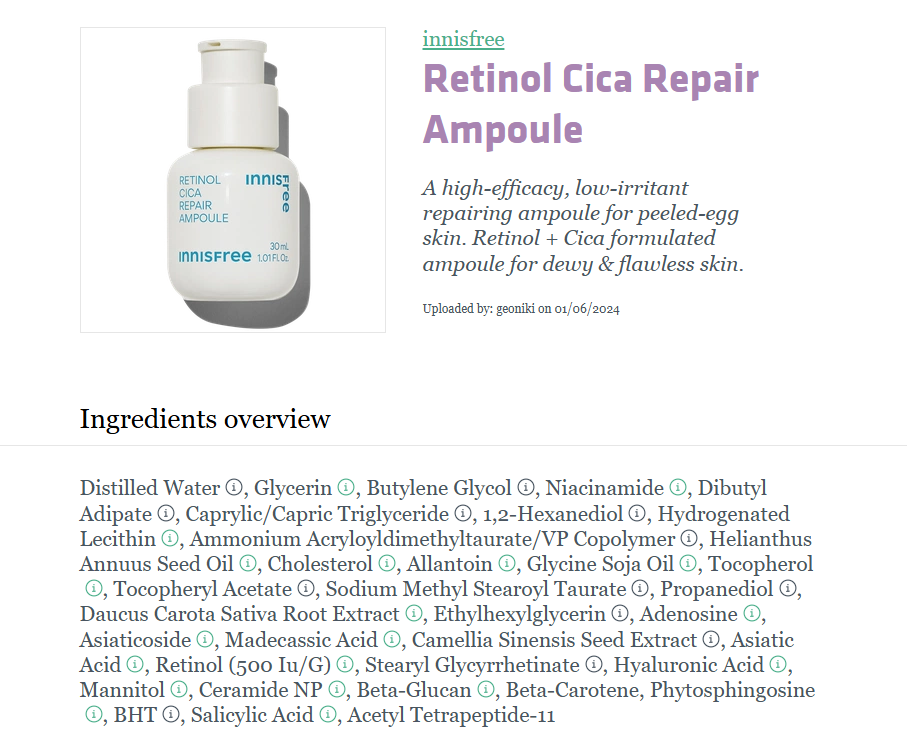
Lately, my skin texture had become quite rough and flaky, and mild brightening products were not helping much with my pigmentation. So I started looking into retinol. Since it was my first time using such an active ingredient, I decided to try the Innisfree Retinol Cica Ampoule, which is well known as a low irritation beginner product.
I used this product every night as part of my routine.
My routine consisted of Abib Heartleaf Toner, Torriden Dive In Serum, the retinol ampoule, and La Roche Posay Cicaplast.
The texture of the ampoule has a slight yellow tint, but do not worry, it does not mean the product is spoiled!
I am not sensitive to fragrance, so I perceived it as scent free.
Because I used only the recommended amount, I did not experience any stickiness. However, if you use more than the suggested amount, you might feel some stickiness.
Since this is a vitamin product, applying sunscreen during the day is essential.
However, I decided not to use it in the morning. I tried applying it once in the morning along with sunscreen but felt like some dark spots appeared. It might be my imagination, but I prefer to avoid using it in the morning altogether.
Honestly, I did not see much improvement. I have been using the recommended tiny pea-sized amount consistently for three weeks now, but I started doubting the claims on the product page that say you will see improvements in just one day or after four weeks of use.
This made me curious about how much retinol the product actually contains, how it works together with the cica, and whether the cica really provides meaningful effects. So I decided to take a closer look myself.
First, let's look at the product information from Olive Young.
It claims to reduce redness by 86 percent, improve skin barrier function by 102 percent, and decrease dead skin cells by 79 percent. This raised questions for me. Is this true? What are the standards? Where was the test conducted?
I searched to see whether these numbers are just marketing phrases or actual test results.

The test was carried out by the Global Medical Research Center (GMRC) and I confirmed that these results came from real experiments, not just marketing claims. However, the test sample was small, involving only 33 women aged between 18 and 39 years with acne-prone skin. Still, since these are real test results, I will accept them.
But I had doubts about the characteristics of retinol and the test results.
Retinol is known to stimulate epidermal cell turnover leading to exfoliation, cause irritation such as redness and stinging, and may temporarily weaken the skin barrier.
Yet, the test concludes that even after a single use, redness decreased and the skin barrier improved.
This directly conflicts with the usual effects of retinol.

So, I analyzed the ingredient list to see the retinol content. According to Korean cosmetic regulations, ingredient labeling follows these rules
Ingredients present at one percent or more must be listed in order of concentration.
Ingredients under one percent can be listed freely in any order at the end.
Certain ingredients like fragrances and preservatives are exceptions and may be listed at the end.
Here is the official full ingredient list.

Among these, retinol is placed toward the end of the list.
This suggests its concentration is below one percent and may actually be less than 0.05 percent.
Typically, retinol concentrations between 0.025 percent and 0.1 percent are used in low irritation products and rarely cause significant irritation.
At the top of the list are skin calming and barrier strengthening ingredients such as niacinamide.
Since the clinical test condition involved physical causes like redness from mask wearing, the improvement is likely due to these calming ingredients rather than the retinol.
Consumers may be drawn to purchase because of the name retinol, but the detailed test results on the product page probably reflect the effects of the highly concentrated calming ingredients rather than the retinol featured in the product name.
I hope this helps clear up some of your questions about the Innisfree Retinol Cica Ampoule and supports you in making smart purchasing decisions
 12Comments
12Comments-
 Influencer27 days agoGosh thx for letting me know that test results on the page might only reflect the effects of highly concentrated ones unlike the product. I coudnt even think of it bruh
Influencer27 days agoGosh thx for letting me know that test results on the page might only reflect the effects of highly concentrated ones unlike the product. I coudnt even think of it bruh Influencer27 days agoNo problem girl. Never forget to read all the details
Influencer27 days agoNo problem girl. Never forget to read all the details Influencer27 days ago@Influencer I SHOULD.... tysm girl 😘
Influencer27 days ago@Influencer I SHOULD.... tysm girl 😘 -
 Influencer22 days agoThanks for a lovely breakdown ✨️✨️
Influencer22 days agoThanks for a lovely breakdown ✨️✨️ -
 Influencer22 days agoSo that's why I couldn't feel the effects that r described....
Influencer22 days agoSo that's why I couldn't feel the effects that r described.... Influencer22 days agoFr. Sometimes it feels like a scam
Influencer22 days agoFr. Sometimes it feels like a scam -
 Influencer13 days agoYOU SHOULDNT USE PRODUCTS WITH RETINOL DURING THE DAY !!!!@@@
Influencer13 days agoYOU SHOULDNT USE PRODUCTS WITH RETINOL DURING THE DAY !!!!@@@ -
 Influencer13 days agoLove the details. I should better check the amount of certain ingredients too....
Influencer13 days agoLove the details. I should better check the amount of certain ingredients too.... -
 Influencer13 days agoCosrx retinol product does work. Give it a try!
Influencer13 days agoCosrx retinol product does work. Give it a try! Influencer13 days agoHow much retinol does it contain?
Influencer13 days agoHow much retinol does it contain? Influencer13 days ago@Influencer Well I didn't check since it worked.....
Influencer13 days ago@Influencer Well I didn't check since it worked..... Influencer13 days agoOhhh ok isee
Influencer13 days agoOhhh ok isee